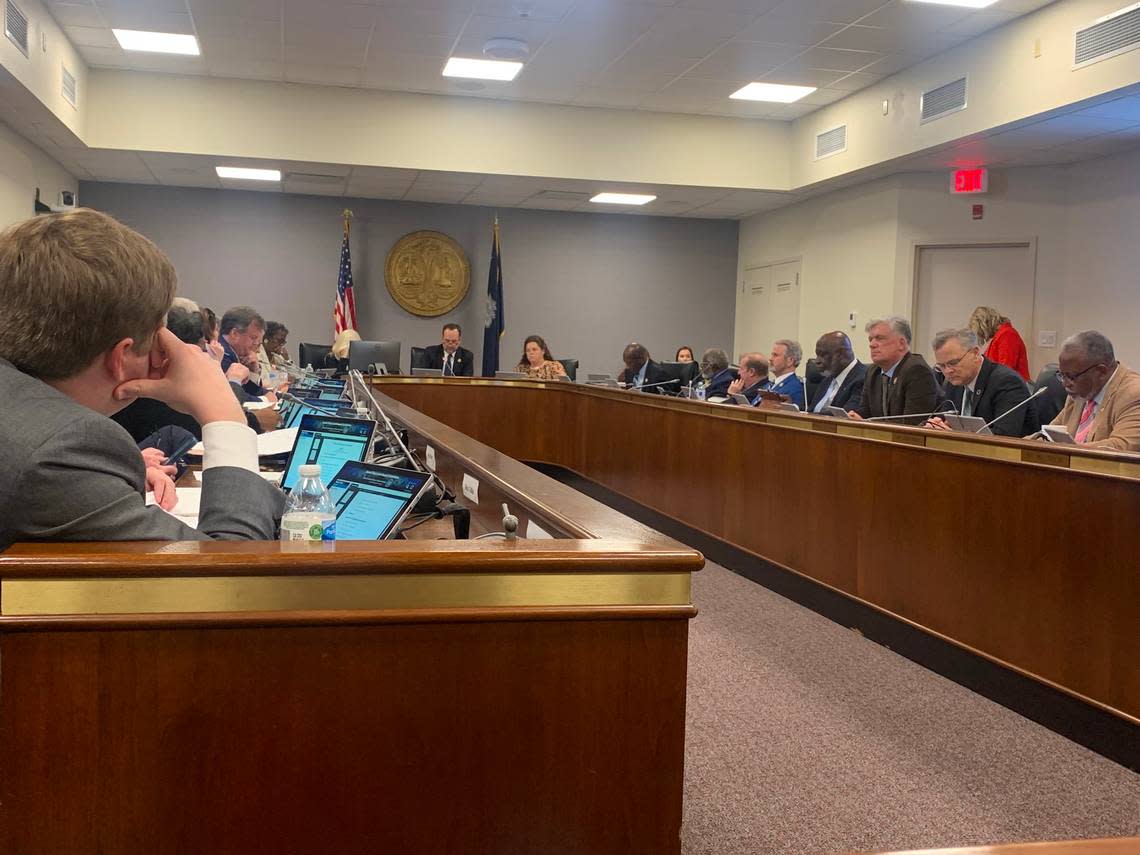SC House budget pushes economic development, investments in people; includes tuition freeze
South Carolina House budget writers aimed to continue investing in economic development and the people of the state, the House’s lead writer says of the Ways and Means Committee budget proposal approved last week.
Among the investments is money to prepare land for companies to locate, to freeze college tuition rates, to create new state parks and create a center for school safety.
Lawmakers have about $3.5 billion in new annual and one-time revenue to spend in this spring’s budget discussions for the spending year that begins July 1. In total, the House budget-writing committee proposed a $13.8 billion spending plan.
The full House is scheduled to debate the budget the week of March 13. After House approval, the Senate will start its deliberations.
Budget writers also had to take into account the second year of a scheduled tax cut that lowers the maximum income tax rate from 6.5% to 6.4%. The cut keeps about $96 million out of state coffers.
“I think this budget is an investment in the people and prosperity in South Carolina,” said Ways and Means Committee Chairman Bruce Bannister, R-Greenville. “Low taxes, conservative budgeting, aggressive economic development efforts lead to a strong economy, which leads to additional opportunity to invest in the people and the economy in South Carolina.”
Among the planned expenditures, budget writers want to give $200 million to the S.C. Department of Commerce for economic development site preparation such as putting in roads, water and sewer infrastructure to sites for major economic development projects. An additional $5.5 million would go to the agency to update its branding efforts when marketing to businesses.
“Site preparation is critical to developing a competitive edge for South Carolina in the southeast to attract companies that can be economic drivers for our state and on a local level,” said state Rep. Leon Stavrinakis, D-Charleston.
The Ways and Means Committee also proposed spending $25 million on state park development, upgrades and maintenance.
The state Department of Parks, Recreation and Tourism has acquired land to build out the Ramsey Grove State Park in Georgetown County, Fort Johnson State Park in James Island and Black River State Park in Williamsburg and Georgetown counties.
The last park opened by PRT was H. Cooper Black in Cheraw in 2006.
“To the degree we can add unique and special things for our citizens to enjoy and that will further draw people to South Carolina to contribute to our local economy, that’s a win for us,” Stavrinakis said. “These are amazing properties and pieces of land that we’re preserving or making special places out of them.”
Budget writers also included $3.2 million to create a center for school safety at the former Gilbert Elementary School in Lexington 1. The center was among the recommendations made by Gov. Henry McMaster in his proposed budget and is in line with the plan to have a school resource officer at every school in the state.
“Having regular training sessions is really a response to (what happened in) Uvalde’s failure to act, ‘Hey, this is what you do when there’s an active shooter,’ and they’re going to go work on that and that’ll be part of their training,” Bannister said.

In-state college students also are in line to not face an increase in their tuition rates for the fifth year in a row. House budget writers proposed $69 million for tuition mitigation to freeze tuition rates for in-state students.
“We wanted to focus on the access and affordability in higher education for our young students across the state,” said state Rep. Nathan Ballentine, R-Lexington. “Freezing tuition prices obviously prevents an increased burden on families and our students throughout the state.”
House budget writers also want to spend $196 million for Medicaid and Medicare programs.
Part of the expense includes replacing matching dollars lost from a decrease in federal funding because the state’s economy is doing well, Medicare premium increases, increased reimbursement rates, increased costs for inflation and other costs to maintain the same level of service in the state.
“This will draw more providers to our underserved communities and that’s been a goal of our subcommittee for the past five or six years,” said state Rep. Bill Herbkersman, R-Beaufort, who leads a panel overseeing health care spending.
Again not included in the budget proposal is money for to start building Interstate 73 to connect Interstate 95 to Myrtle Beach, a roadway that would encourage economic development in the Grand Strand and help with hurricane evacuations.
McMaster and Horry County lawmakers last year sought $300 million to start the highway, a recommendation the governor pushed for again this year. However, lawmakers included $200 million to speed up bridge work planned by the S.C. Department of Transportation around the state.
“My feel for the House is there’s still a very strong desire to fix the (current) interstate system,” Bannister said. “That we have to make sure that it’s up to snuff before we start building new roads.”
The initial budget proposed by Ways and Means does not include member-directed spending for projects in their districts.
Member projects are expected to be added when the House receives the budget back from the Senate. In recent years some earmarked projects have been controversial, including how money went to a nonprofit run by a lawmaker’s friend and how an Upstate Christian organization wanted to use state dollars to build a school.
Bannister said the Ways and Means Committee is working on the best way to review projects before they get state money, to make sure organizations or nonprofits that get dollars are in good standing, and if the project is worth the investment.
“We’re trying to figure out if there’s a way to vet those projects better than we have in the past,” Bannister said.
Bannister did not know how many member projects would ultimately be included but the committee has billions in requests.
